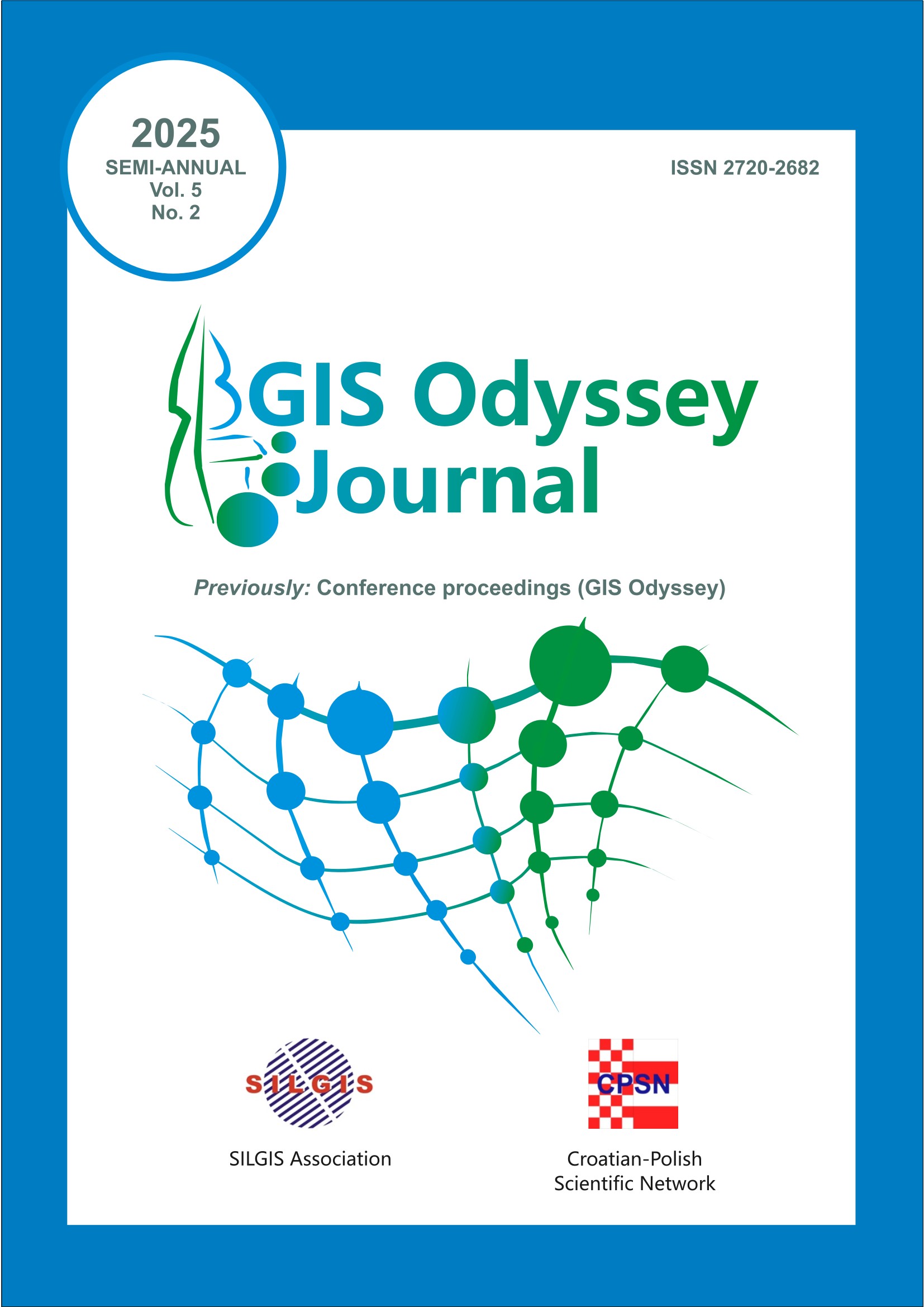LAND USE/LAND COVER DYNAMICS IN THE GAROUA-BOULAI ARTISANAL GOLD MINING DISTRICT, EAST REGION CAMEROON (2015–2024) USING SENTINEL-2 IMAGERY: A REMOTE SENSING & GIS APPROACH
DOI:
https://doi.org/10.57599/gisoj.2025.5.2.185Keywords:
ASGM, LULC Change, Sentinel-2 imagery, Remote sensing and GIS, Change detectionAbstract
This study examined land use/land cover (LULC) dynamics in the Garoua-Boulai artisanal gold mining district, Cameroon, from 2015 to 2024 using Sentinel-2 imagery, GIS, and statistical analysis. Supervised classification (Maximum Likelihood, ArcGIS 10.8) and accuracy assessment (overall accuracy 87–94%; Kappa 0.80–0.87) revealed major land transformations. Dense vegetation declined by ~48% and agricultural land by ~19%, while bare land expanded by 183%, built-up areas nearly tripled, and mine sites increased by 34%.Correlation analysis showed strong negative relationships between mine sites and vegetation (r = –0.957) and agriculture (r = –0.932), and positive relationships with bare land (r = +0.928) and built-up areas (r = +0.997). Regression slopes indicated that each hectare of mine expansion corresponded to losses of ~12–17 ha of vegetation/agriculture and gains of ~24ha of bare land. Although limited to three temporal data points, the high correlations and explanatory power (R2) provide compelling evidence of mining-driven land change. These findings highlight the urgent need for stronger regulation of artisanal mining, rehabilitation of abandoned pits, and integration of remote sensing into land governance to support sustainable land management in Cameroon’s mining districts.
Downloads
Published
How to Cite
Issue
Section
License
This is an open access publication, which can be used, distributed and reproduced in any medium according to the Creative Commons CC-BY 4.0 License.







